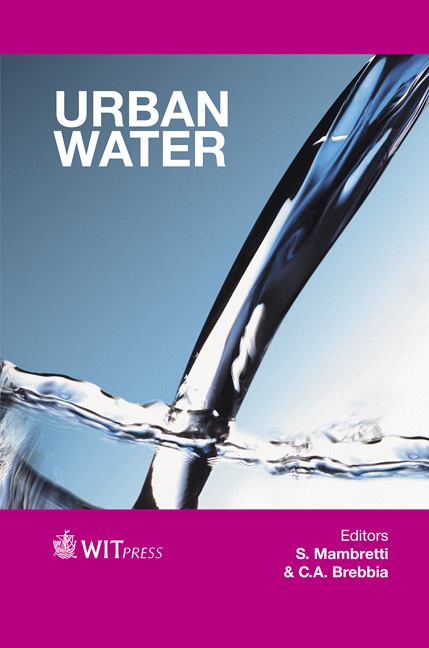Compensatory Techniques On Urban Drainage For Flood Control With The Aid Of Mathematical Modelling: A Case Study In Rio De Janeiro City
Price
Free (open access)
Transaction
Volume
122
Pages
12
Published
2012
Size
1,960 kb
Paper DOI
10.2495/UW120201
Copyright
WIT Press
Author(s)
M. G. Miguez, A. P. Veról, F. C. B. Mascarenhas, R. B. Santos & M. C. Martingil
Abstract
Compensatory techniques on urban drainage for flood control with the aid of mathematical modelling: a case study in Rio de Janeiro City M. G. Miguez, A. P. Veról, F. C. B. Mascarenhas, R. B. Santos & M. C. Martingil Universidade Federal do Rio de Janeiro, Brazil Abstract The traditional canalisation approach for flood control has been complemented or replaced by new concepts that consider a systemic approach, with distributed interventions over the catchment intending to recreate flow patterns prior to the urbanisation. Compensatory techniques on urban drainage have been proposed to fulfil this aim. However, the spatio-temporal variability of the phenomenon gives particular characteristics to each catchment. In this context, a systemic evaluation of flood control projects is needed, providing adequate spatial coverage without superimposing effects in time. Mathematical modelling emerges as a useful tool to represent the integrated behaviour of urban drainage and landscape. This is where this work takes place, assessing an urban catchment subjected to floods with the aid of MODCEL, a mathematical model developed in the Federal University of Rio de Janeiro. This model represents the catchment using the flow cells concept, conforming a flow net. Guerenguê River catchment, located in the west side of Rio de Janeiro city, in Jacarepaguá neighbourhood, which is an area of particular interest because of the Olympic Games that will be held in Rio de Janeiro in 2016, was taken as a case study. This catchment suffers from serious problems related to its drainage system and water pollution, compromising the local quality of life. The starting point of this evaluation is a set of retention reservoirs, associated with an urban retrofit proposed by the Municipality. In addition, this study introduces several distributed compensatory measures in order to obtain an effective result in flood attenuation. The modelling results show that, at present situation, great part of the catchment suffers from flooding, with water depths that usually range from 0.15m to 1.50m. In critical areas, flooding may surpass the level of 1.50m high. The introduction
Keywords





